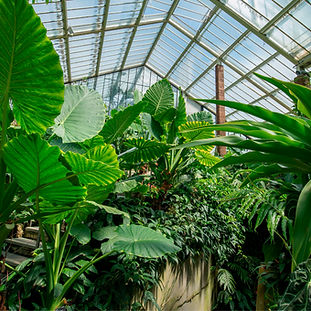 |
|---|
About Us

A marriage of AI and deep ethnobotanical knowledge
Polypharmakos is a spin-out originating jointly from the University of Cambridge and Royal Botanic Gardens, Kew. Together with our strategic partner, CABI, we have access to some 8.75 million extracts, the world’s largest natural library. We aim to discover and develop novel anti-inflammaging nutraceuticals and drugs from natural extracts using a new innovative and multidisciplinary collaborative approach and leveraging many decades of combined experience in the field.
The plant kingdom, with 300,000 to 400,000 higher species, has always been a key source of new chemical entities (NCEs) for active pharmaceutical ingredients and lead compounds. But it is estimated that only 5% to 15% of these terrestrial plants have been chemically and pharmacologically investigated in a systematic fashion. Approximately 25,000 of the world’s plants have documented medicinal uses and only some 200 have been incorporated into western medicine.
Our screening strategy looks for signals based on human and machine capabilities. Kew and CABI's collections are underpinned by a deep knowledge in ethnobotany (the study of plants) developed over 264 years since Kew was founded, residing both in archives and the minds of staff scientists. The magnitude of the task requires us to use AI-based machine learning, which can rapidly process hundreds of extracts to look for signals. Cambridge and Kew laboratories have state of the art analytical equipment and extensive experience in different aspects of natural product chemistry and
biological screening.
Interrogating the world’s plants and funghi for natural products resources
Polypharmakos brings together a myriad of compounds, capabilities and people

30,000+
living plant
specimens

Global connections to other institutes
6000+ in vitro
specimens and
76,000 preserved specimens
8.75m plant accessions, representing 95% of known vascular plant genera
At the heart
of Europe’s largest biotech cluster
Consistently ranked as one of the world’s top research universities
1.25m fungal samples, representing 60% of known fungal genera
500 resident scientists and archives libraries
A track record of converting research into disruptive ventures
Cutting edge research capabilities
World’s largest Seed bank: more than 2bn seeds
58,000+
DNA/tissue samples, representing half of the world’s flowering plant genera
Vast pool of scientists and thought leaders
World class expertise in Immunology and inflammation
-12.jpg)
Ethnobotany is at the the heart of our approach
The natural world exists in relationship with humanity - we have extensive knowledge of the role that plants and fungi have played, both historically, and in today’s many cultures and practices. Our archives, and observations of current practices, deliver deep learnings into the significance of ethnobotany.
From Kew’s 264-year history, the institution holds one of the largest collections of published botanical information in the world, an archive detailing the taxonomy and systematics of wild plants. The records contain reports from expeditions by botanists, a rich reference trove that informs us of historical interactions between people and plants.
The four main pillars are:
Conservation
Conservation
Ethnobotany helps to preserve traditional knowledge about plants and their uses, which is often passed down through generations of indigenous and local communities. This knowledge can inform conservation efforts and help to protect biodiversity
Conservation
Medicinal uses
Ethnobotany can help to identify new medicinal plants and traditional remedies previously unrecognised
Cultural preservation
Ethnobotany can help to preserve cultural traditions and practices that are based on the use of plants. Studying how different cultures use plants informs our nutripharma strategy
Economic benefits
Many plant-based products have economic value, such as food, textiles, and cosmetics. Ethnobotany can help to identify new uses for plants and promote the sustainable use of natural resources
We have a five phase approach to interrogate the world’s largest plant and funghi libraries
AI married with ethnobotanical knowledge allows rapid screening
1. Hypothesis
Our explorations are guided by an understanding of:
-
The ‘comparative functionality’ of how plant receptors may mirror human physiological activity
-
The ‘families’ of extracts that may yield such functionality
-
A broad knowledge of ethno-botany, allowing us to review combinations of extracts from around the world
2. Selection
-
We have complete access to the some 400 databases of Kew and CABI, the world’s largest libraries of verified crude extracts of plants and fungi
-
Collected over 260 years, each extract has been verified by species, the location on the plant, and the season harvested
-
Mass spectronomy has been used to analyse extracts, giving each a unique ’fingerprint’
4. Assays
-
Chosen extracts then undergo pharmacological assays to assess physiological action
-
This allows us to resolve which extracts impact on known physiological markers

5. Discovery
-
This process has been developed over the years at Kew, and proven to be effective at making genuine discoveries
-
AI enables us to screen thousands of extracts with a targeted efficiency not previously available
Images courtesy of Royal Botanic Gardens, Kew
